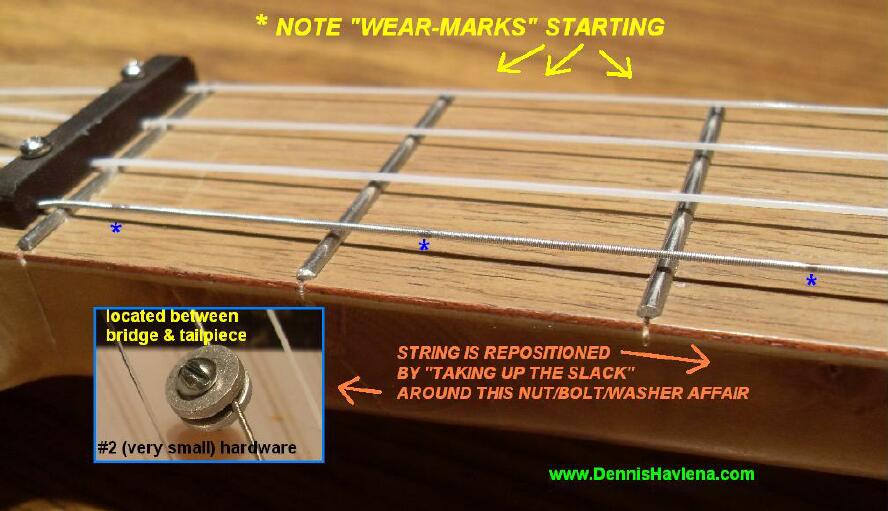
The Idea: when you see wear-marks on the string, directly above the frets, simple repositioning of the length of the string, so that the wear marks are positioned about half-way between frets & no longer directly over the fret, is what's needed "Knot method": This is the crudest -- simply tie a granny-knot in the string between the bridge and the tailpiece. While this works, the knot weakens the string & it could break all the easier. "Nut & bolt" method: This puts less strain on the string. Crude as hell but it works wonderfully. Use the smallest "gauge" nuts/bolts/washers you can find - "#2" is usually sufficient. I've used this trick with several different instruments. Of course it won't work on a classical guitar, unless it has a tailpiece instead of through-the-bridge type string mounting. Dennis Havlena Webpage at www.DennisHavlena.com
Click here to access my webpage